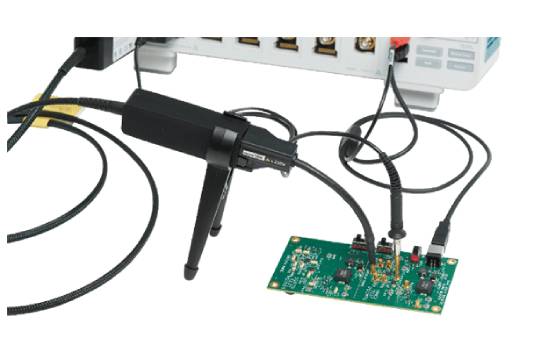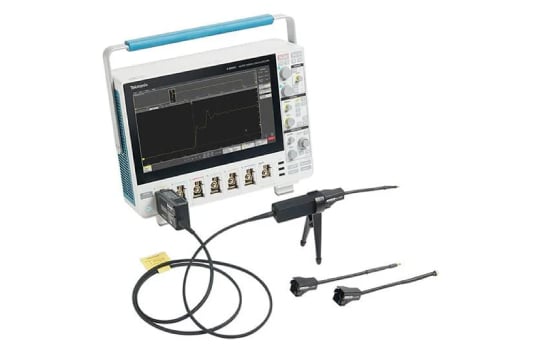Contact us
Call us at
Available 6:00 AM – 5:00 PM (PST) Business Days
Download
Download Manuals, Datasheets, Software and more:
Feedback
IsoVu™ Isolated Voltage Probes
Uncover the fast, floating signals that your non-isolated probes are hiding. IsoVu Probe Technology virtually eliminates common mode interference using optical isolation. This delivers accurate differential measurements on reference voltages slewing ±60kV at 100V/ns or faster. And with our IsoVu Generation 2 design, you get all the benefits of IsoVu technology at 1/5 of the size.
With versatile MMCX connectors and an unmatched combination of bandwidth, dynamic range, and common mode rejection, IsoVu Gen 2 probes are setting new standards for isolated probe technology.
See more oscilloscope probes »
Up to 1 GHz
Up to ±2500 V
60 kV
Up to 160 dB(100 Million to 1)
What is an Isolated Probe?
An Isolated probe uses galvanic (optical) or RF isolation to divorce the reference voltage of the probe from the reference voltage of the oscilloscope (typically Earth Ground). This enables power designers to accurately resolve high bandwidth, high voltage differential signals in the presence of large common mode voltages. Tektronix has developed a new technology (IsoVu) that uses galvanic isolation to provide best in class common mode rejection performance across a wide bandwidth.
The combination of isolation and high frequency in IsoVu probes provide power designers with more accurate measurements than traditional differential probes for applications that require high bandwidth while measuring high voltage signals. Example use cases include:
- Switched Mode Power Supply design
- Power FET design/analysis for Wide Bandgap GaN and SiC devices
- Inverter design
- Motor Drive design
- BCI or ESD measurements
- Current shunt measurements
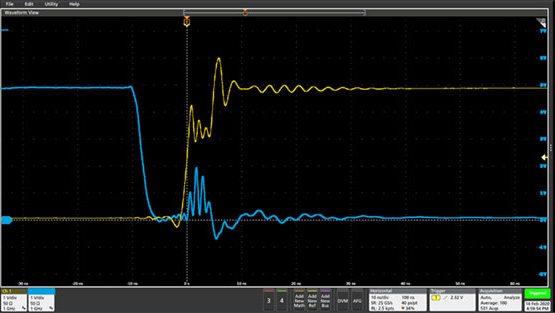
Less Common Mode Noise, More Detail
IsoVu technology uses power-over-fiber and an optical analog signal path for complete galvanic isolation between the measurement system and your DUT. By allowing the probe to float independently at the common mode voltage, isolation greatly reduces common mode interference.
In combination with a 4, 5 or 6 Series MSO, IsoVu provides an efficient, reliable way to resolve high-bandwidth differential signals with fast-slewing references, allowing you to spend less time “designing blind” in a variety of situations:
- Floating measurements in power supplies
- Measuring current through shunt resistors
- Debugging ESD and EMI susceptibility problems
- Breaking ground loops
Isolation Addresses Common Sources of Differential Measurement Error
High Differential Voltage at a Range of Bandwidths
With traditional differential probes you had to choose between high bandwidth or high voltage levels. IsoVu probes, with their shielded coaxial cable and isolation, provide high bandwidth and a differential voltage range of ±2500V.
IsoVu Gen 2 offers a range of bandwidths – 200 MHz, 500 MHz, and 1 GHz – to fit your budget and build your bench with the performance necessary for your specific projects.

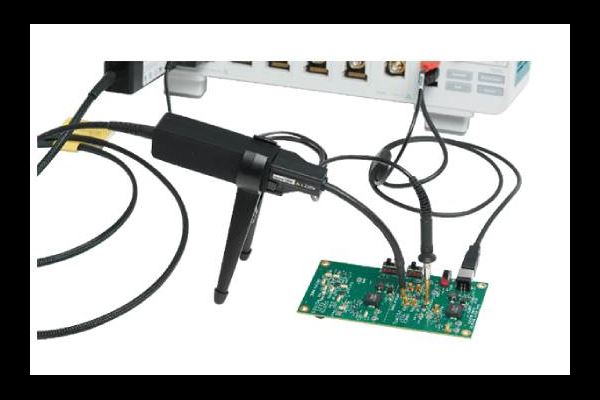
Innovative Technology in a Space-Saving Design
IsoVu Generation 2 probes offer the same bandwidth, common mode rejection, and voltage range as our original IsoVu probes, but at 1/5 of the size and without a separate controller box. The lasers and analog electronics are contained in the compact head and oscilloscope connector. Compared to our original IsoVu probes, Generation 2 probes also have:
- Better DC gain accuracy
- Improved step response
- More built-in ranges
High Performance with Convenient Connections
IsoVu probe tips have a range of connections and accessories that offer high performance and accessibility.
For example, MMCX connectors are inexpensive, widely available connectors that make for stable, hands-free test points and offer the best bandwidth and common mode rejection. Their solid metal body shields the center conductor and minimizes ground loop area for the lowest interference possible.
Other accessories are available to adapt the probe tips to a wide range of connections. Additional 0.100” and 0.200” spaced square-pin tips are available for applications that require greater than ±250V differential voltage.
When not using a tip, the sensor head has 1 MΩ and 50 Ω switchable termination at the probe’s SMA connector. This feature effectively adds an isolated channel to any compatible oscilloscope.
Read more about IsoVu accessories (with bandwidth and CMRR plots)
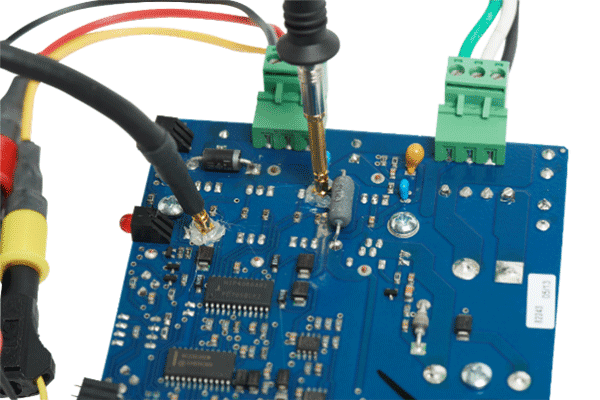
| Model | Bandwidth | Differential Voltage | Common Mode Voltage | Common Mode Rejection Ratio | Fiber Cable Length | List Price | Configure And Quote |
|---|---|---|---|---|---|---|---|
| TIVP02 | 200 MHz | ±2500 V | ±60 kV | DC: 160dB 100 MHz: 100 dB 200 MHz: 100 dB |
2 meters | US $11,600 | Configure & Quote |
| TIVP02L | 200 MHz | ±2500 V | ±60 kV | DC: 160dB 100 MHz: 100 dB 200 MHz: 100 dB |
10 meters | US $16,800 | Configure & Quote |
| TIVP05 | 500 MHz | ±2500 V | ±60 kV | DC: 160dB 100 MHz: 100 dB 200 MHz: 100 dB |
2 meters | US $21,400 | Configure & Quote |
| TIVP05L | 500 MHz | ±2500 V | ±60 kV | DC: 160dB 100 MHz: 100 dB 200 MHz: 100 dB |
10 meters | US $26,300 | Configure & Quote |
| TIVP1 | 1 GHz | ±2500 V | ±60 kV | DC: 160dB 100 MHz: 100 dB 200 MHz: 100 dB |
2 meters | US $31,300 | Configure & Quote |
| TIVP1L | 1 GHz | ±2500 V | ±60 kV | DC: 160dB 100 MHz: 100 dB 200 MHz: 100 dB |
10 meters | US $35,900 | Configure & Quote |
| Model | Bandwidth | Differential Voltage | Common Mode Voltage | Common Mode Rejection Ratio | Fiber Cable Length | List Price | Configure And Quote |
|---|---|---|---|---|---|---|---|
| TIVP02 | 200 MHz | ±2500 V | ±60 kV | DC: 160dB 100 MHz: 100 dB 200 MHz: 100 dB |
2 meters | US $11,600 | Configure & Quote |
| TIVP02L | 200 MHz | ±2500 V | ±60 kV | DC: 160dB 100 MHz: 100 dB 200 MHz: 100 dB |
10 meters | US $16,800 | Configure & Quote |
| TIVP05 | 500 MHz | ±2500 V | ±60 kV | DC: 160dB 100 MHz: 100 dB 200 MHz: 100 dB |
2 meters | US $21,400 | Configure & Quote |
| TIVP05L | 500 MHz | ±2500 V | ±60 kV | DC: 160dB 100 MHz: 100 dB 200 MHz: 100 dB |
10 meters | US $26,300 | Configure & Quote |
| TIVP1 | 1 GHz | ±2500 V | ±60 kV | DC: 160dB 100 MHz: 100 dB 200 MHz: 100 dB |
2 meters | US $31,300 | Configure & Quote |
| TIVP1L | 1 GHz | ±2500 V | ±60 kV | DC: 160dB 100 MHz: 100 dB 200 MHz: 100 dB |
10 meters | US $35,900 | Configure & Quote |
| Key Specifications | Tektronix TIVP (with TIVPMX50X tip*) |
Tektronix TIVH (with MMCX250X tip*) No longer available for ordering |
Tektronix THDP0200 |
|---|---|---|---|
| Applications | High Side VGS, Wide Bandgap (GaN and SiC) characterization, SMPS optimization, Temperature Testing (with SMA cable) |
High Side VGS, Wide Bandgap (GaN and SiC) characterization, SMPS optimization |
General Purpose, Si and IGBT-based power electronics |
| Bandwidth | 200 MHz, 500 MHz, 1 GHz | 200 MHz, 500 MHz, 800 MHz | 160 MHz, 200 MHz |
| Risetime | 2ns, 850ps, 450ps | 2ns, 850ps, 450ps | 1.75ns |
| CMRR @DC | 160 dB | 160 dB | 80 dB |
| CMRR @100 MHz | 85 dB | 85 dB | 26 dB |
| Diff. Voltage Range | ±250V* | ±250V* | 150V, 1500V |
| CM. Voltage Range | ±60kV | ±60kV | ±1500V |
| Offset Voltage Range | ±250V* | ±250V* | 50X Scope Input Offset Range ±50V typ. |
| Noise (200mV – 3V measurements) | 41.8mVpp | 79.8mVpp | 110mVpp |
| DC Gain Accuracy | 0.6% typ. | 3% | 2% |
| Input Impedance | 10 MΩ || 3 pF * | 10 MΩ || 2 pF | 10 MΩ || 2 pF |
| Operating Temperature Range | 0°C to 50°C (Sensor Head) | 0°C to 70°C (Sensor Head) | 0°C to 40°C |
| Oscilloscope Compatibility | 4/5/6 Series MSO only |
All TekVPI Oscilloscopes (including 4/5/6 Series MSO) |
All TekVPI Oscilloscopes (including 4/5/6 Series MSO) |
*Closest value to THDP0200 selected for comparison purposes
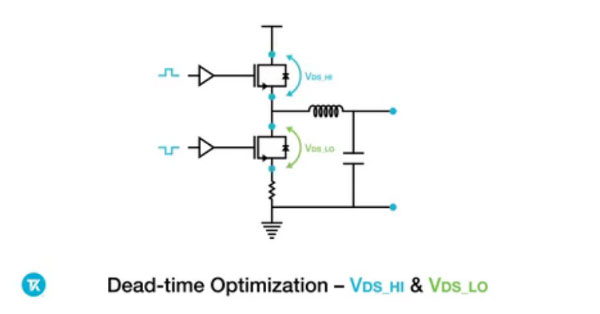
Floating Measurements on Power Supplies
Making high-side measurements in half-bridge power converters is challenging because the source or collector to which the measurements are referenced is slewing rapidly up and down. Wide bandgap devices like SiC and GaN FETs are even harder to measure because they can switch high voltages in a few nanoseconds. Noise from this rapidly changing common mode voltage leaks into the differential measurements and hides details on VGS and VDS. IsoVu probes, with their unmatched common mode rejection at full bandwidth, let you see signal details, often for the first time.
Measuring Current Through Shunt Resistors
Measuring the differential voltage across a shunt resistor should be an easy way to get accurate current measurements. But due to the common mode voltages involved, it can be surprisingly challenging. IsoVu, with its high common mode voltage rating and high common mode rejection, succeeds where others fail.
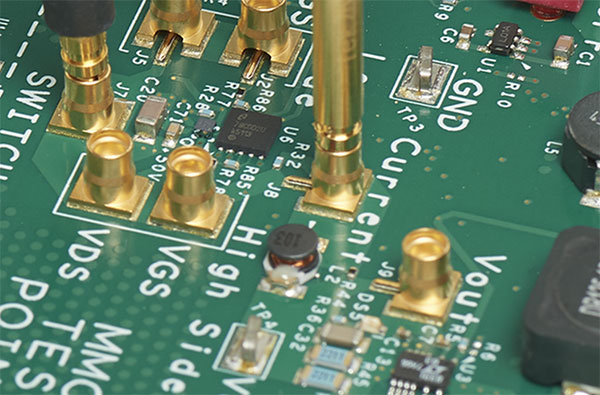

Debugging ESD Issues
Going beyond functional testing to troubleshoot the root cause of ESD failures can be frustrating. When using conventional electrical probes, the ESD discharge couples into the probe and propagates down the cable to the oscilloscope, even if the scope is sitting outside of a faraday cage. Any waveform visible on the scope isn’t representative of what’s actually happening at the test point. But thanks to optical isolation, IsoVu Gen 2 probes prevent coupling and give a more accurate picture of DUT behavior during ESD and EFT testing beyond simple system testing.
The measurement system can be used with the following Tektronix oscilloscopes. Oscilloscope software version 1.28 or higher is required. For oscilloscopes not included in this list, contact your local Tektronix representative.


